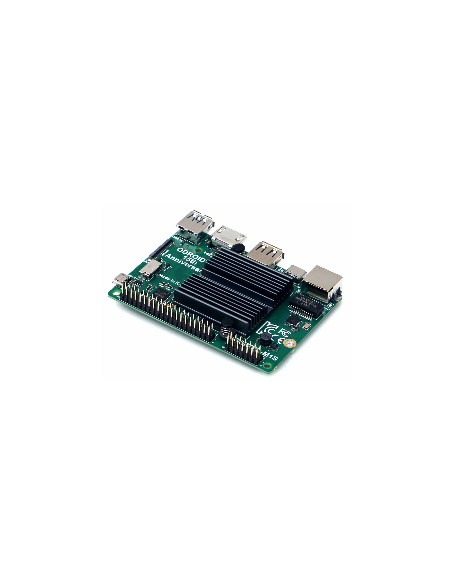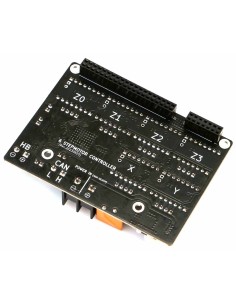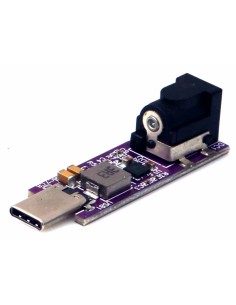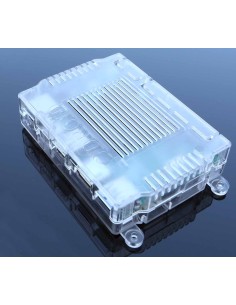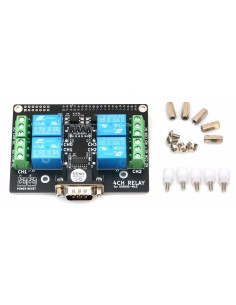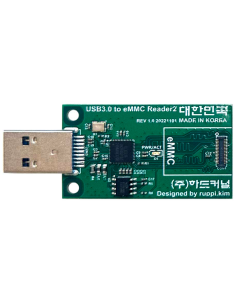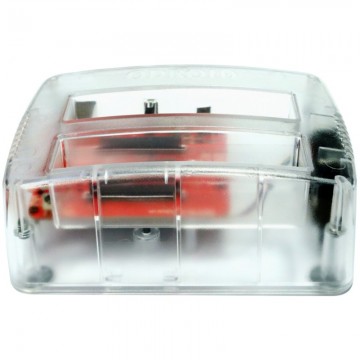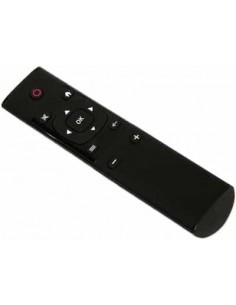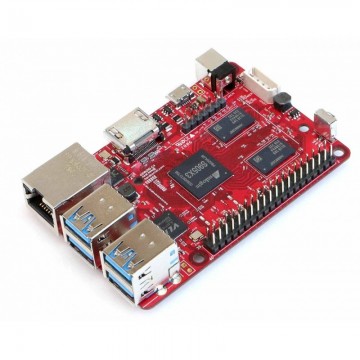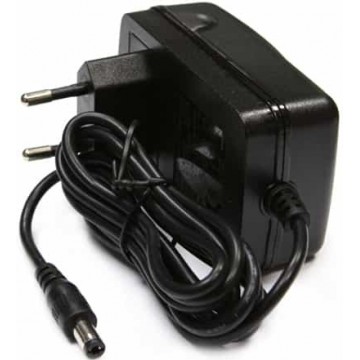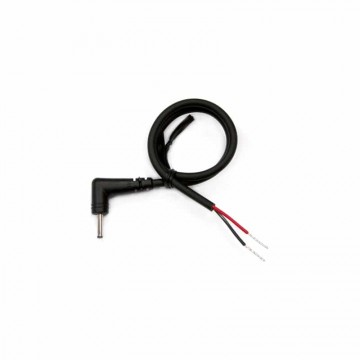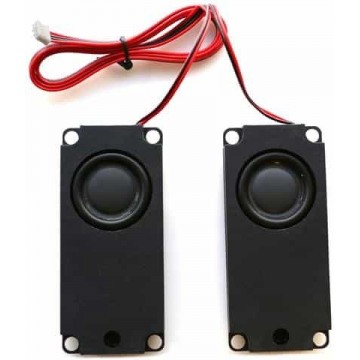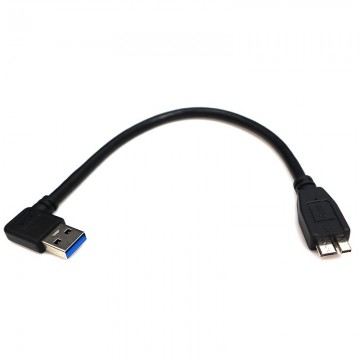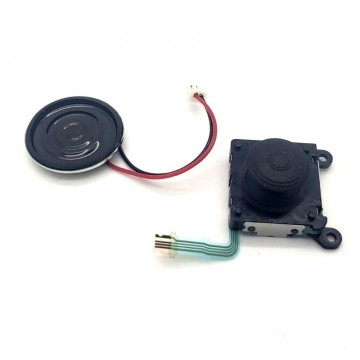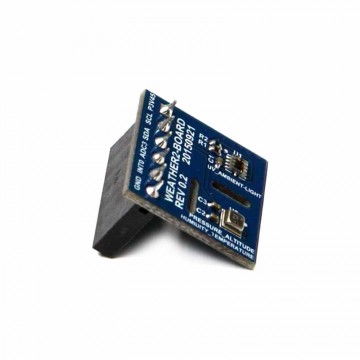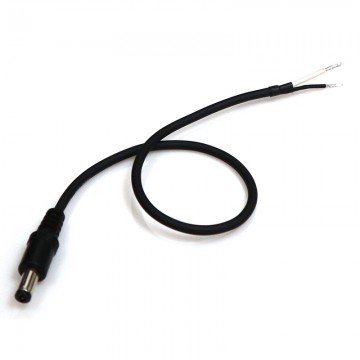We would like to introduce you to the ODROID-M1S which was developed over the past six months to respond to market demands.
We made the board about 20% thinner, reduced power consumption by about 20%, added 14 header pins, and a built-in 64GB eMMC chip on the board. We have lowered the price including a case, heatsink, and power adapter. We believe this will help significantly reduce the cost of building your own affordable and sustainable embedded systems. To ensure longevity, which is important to customers using it for industrial purposes, we will supply this product until at least 2036.
By utilizing 3D modeling from the early PCB design stage, we were able to complete case development relatively precisely and rapidly.
It will be remembered for a long time as a novel development project in which collaboration between circuit design & mechanical design proceeded quite smoothly.

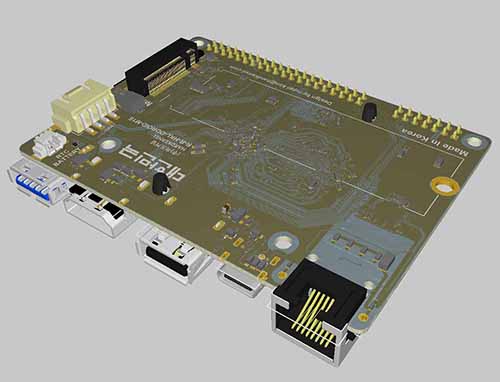
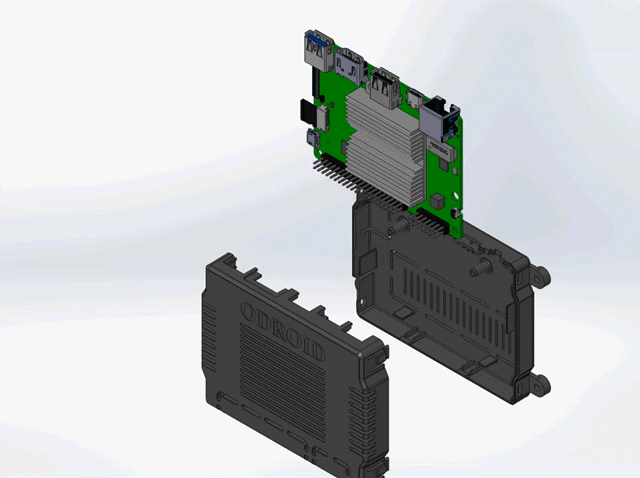
The SOC in the M1S is the RK3566, which is the younger sister of the RK3568 used in the original M1. This allows most of the software development to be reused. Because the bootloader and kernel settings are different, existing OS images for M1 cannot be used as-is, but porting is quickly possible through a simple process.
For detailed internal configuration, please refer to the block diagram below.
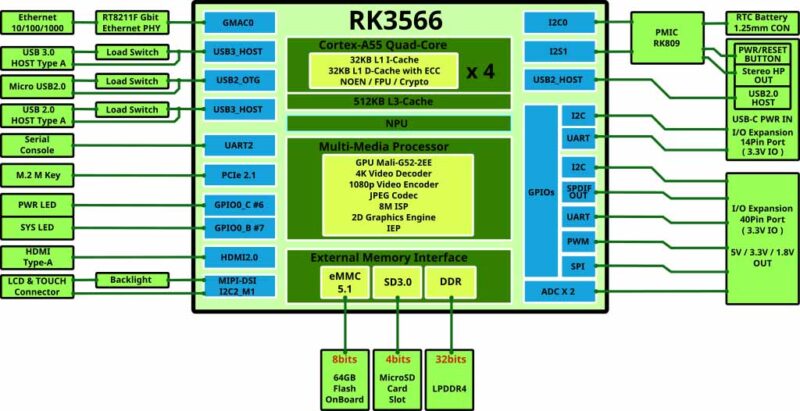
On-board eMMC storage
For the first time in the ODROID board series, an eMMC chip was soldered to the PCB by default instead of using a removable eMMC module. We think 64GB capacity is sufficient for building most embedded systems.
The speed of eMMC measured with the fio command is approximately 180MiB/s, which is about 3~5 times faster than typical microSD cards.
.
On-board M.2 NVMe slot
In case the 64GB storage space of the soldered eMMC memory is insufficient, consider using an industry standard 2280 form factor NVMe SSD. An on-board M.2 NVMe slot is provided to access large amounts of data storage.
Unlike the original M1 model’s PCIe 3.0 x 2 lanes configuration, M1S has PCIe 2.1 x 1 lane. The NVMe transfer speed of the M1S has been reduced by about 1/4. However, we still believe that ~400 MiB/s of storage access speed is sufficient for building various high-end embedded systems.
Note that M.2 SATA storage devices can not be used. The M.2 slot supports only a PCIe interface (M-Key)
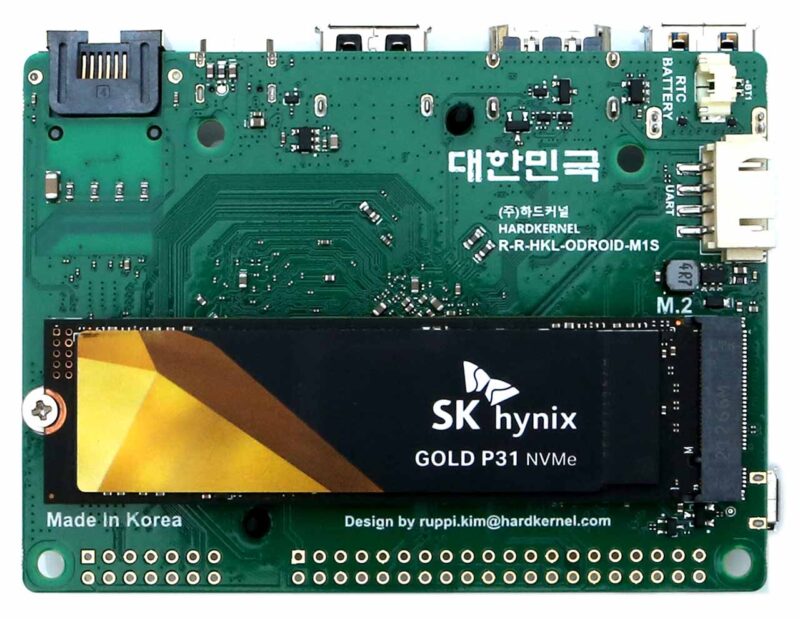
Power consumption
To create the graph below, we turned on the M1S and recorded the power consumption until the Ubuntu Desktop OS boots and enters Idle mode. We used the SmartPower3 device to examine power characteristics.
-With Ethernet and HDMI monitor connected, the peak power consumption is close to 3.7 Watts during booting, but drops to 1.5 Watts in desktop GUI idle state.
-If you remove the HDMI monitor for a headless system, power consumption in idle mode drops to near 1.0 Watt. Additionally, please note that when the Ethernet cable is unplugged, the power drops to 0.7 Watt.

When performing a CPU stress test without either HDMI output or Ethernet connection, the power consumption is about 3.2 Watts. This shows an energy savings of about 25% compared to the 4.3 Watts of the original ODROID-M1 under the same test conditions. Note that the computing power of ODROID-M1S has been measured to be 5-10% lower than that of M1.
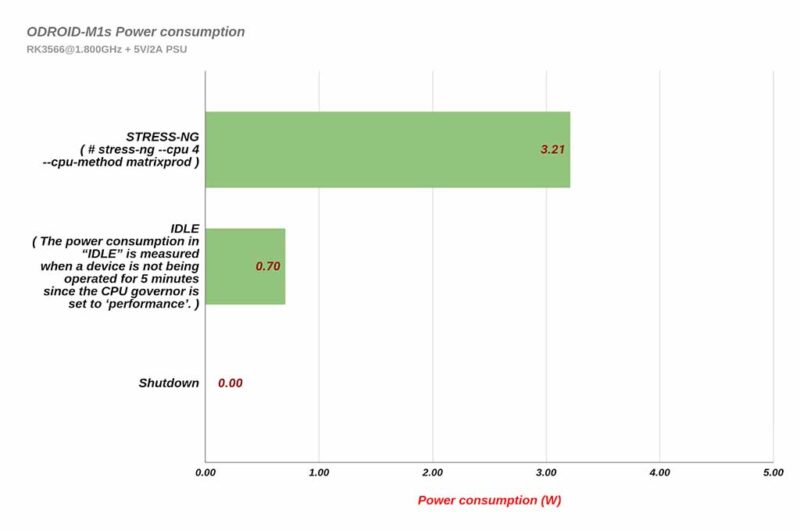
Thermal characteristics
Thermal throttling does not occur even when performing a CPU stress test while mounted in a case. Because system power consumption is low, less heat is generated. Cooling is sufficient with just the stock heatsink.
As shown in the graph below, when a stress test was performed on ODROID-M1S with a stock heatsink under room temperature conditions of 25°C, the CPU temperature did not exceed 65°C and maintained the maximum clock frequency.

Even when assembled in the case, the CPU temperature did not exceed 75°C and thermal throttling did not occur.
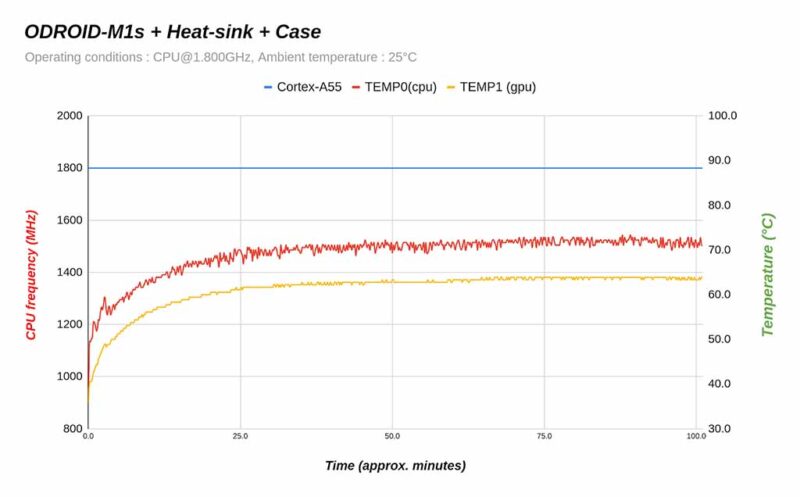
Board Detail
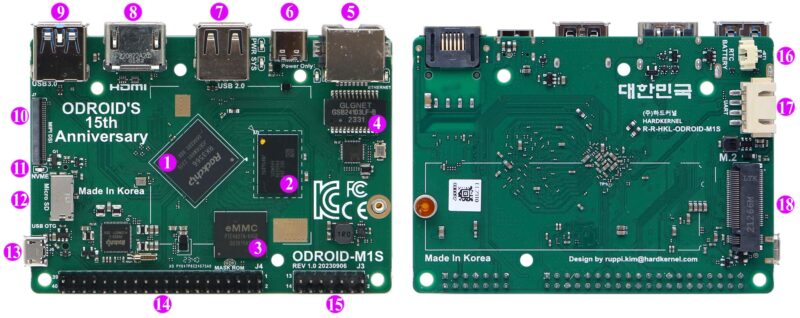
1 Rockchip RK3566 CPU 10 1 x MIPI DSI 4Lane
2 LPDDR4 RAM 11 1 x M.2 LED Indicator
3 1 x 64GB eMMC embedded 12 1 x Micro SD Slot
4 1 x Ethernet Transformer 13 1 x Micro USB2.0 OTG
5 1 x RJ45 Ethernet Port (10/100/1000) 14 40 x GPIO Pins Optional
6 1 x USB Type C Power Connector 15 14 x GPIO Pins Optional
7 1 x USB 2.0 16 1 x RTC Backup Battery Connector
8 1 x HDMI 2.0 17 1 x UART for System Console
9 1 x USB 3.0 18 1 x M.2. M-KEY PCIe2.1 1Lane

GPIO Header
There are 40-pin and 14-pin header pin connectors for general purpose input and output functions. Digital IOs, UARTs, I2Cs, PWMs, ADCs, SPI, USB 2.0 host, Analog audio output, Power-on and Reset signals are available.
What we heard from many B2B and B2C customers is that they often didn’t use the actual GPIO functionality. Therefore, to lower production costs and product price, we decided to make GPIO header pin installation an option. If you choose the option to install 40-pin and 14-pin GPIO headers, $3 will be added to the price. An IO-labels board for easier DIY tinkering will also be provided.
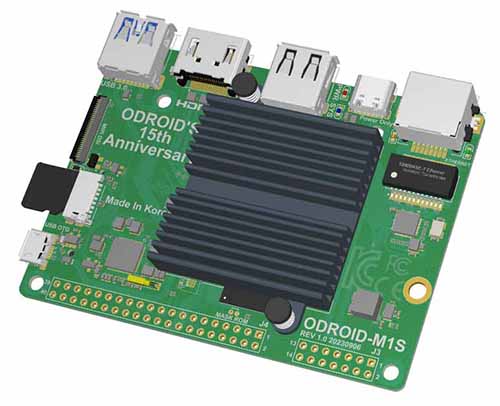

MIPI-DSI
-The four-lane MIPI-DSI port can be directly connected to an LCD panel.
-The ODROID-Vu8S kit with an 8 inch, 800×1280 wide viewing angle LCD and capacitive multi-touch screen is an available option. Note that LCD connector is different from the one on the ODROID-M1.
-If you assemble the ODROID-M1S single board computer on the rear side of the Vu8S kit, you can easily implement a Human-Machine-Interface (HMI) device with Android as well as Linux.
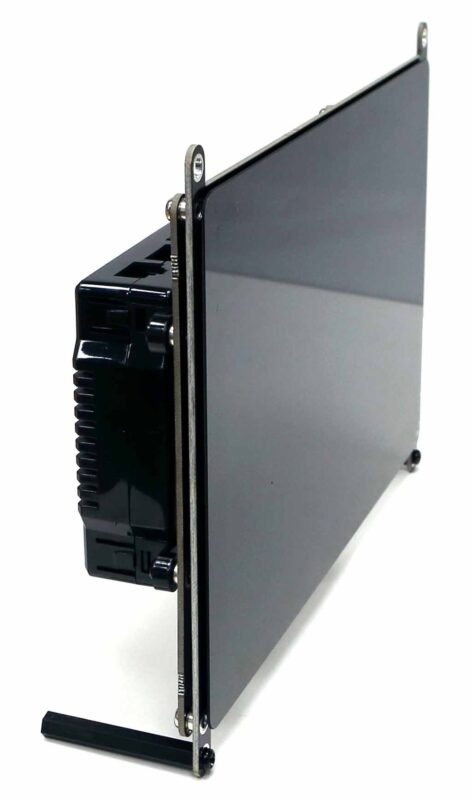
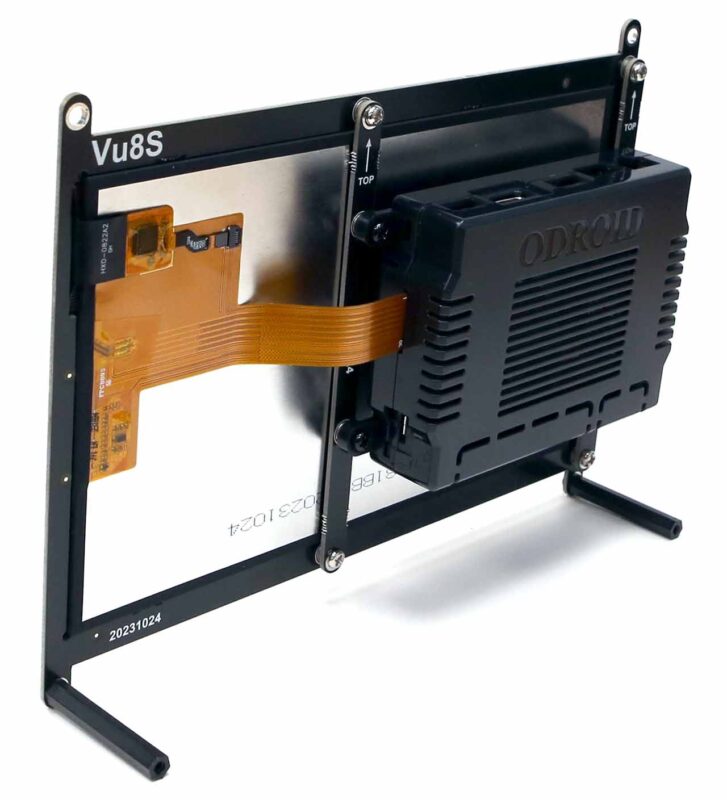
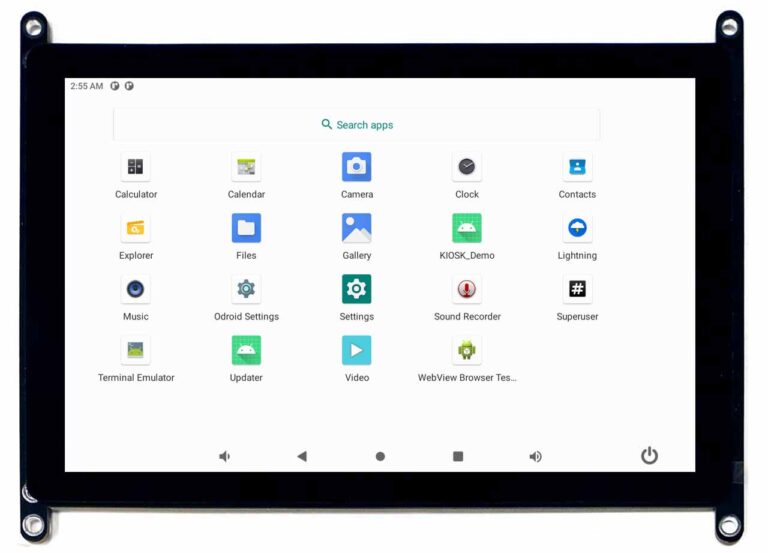
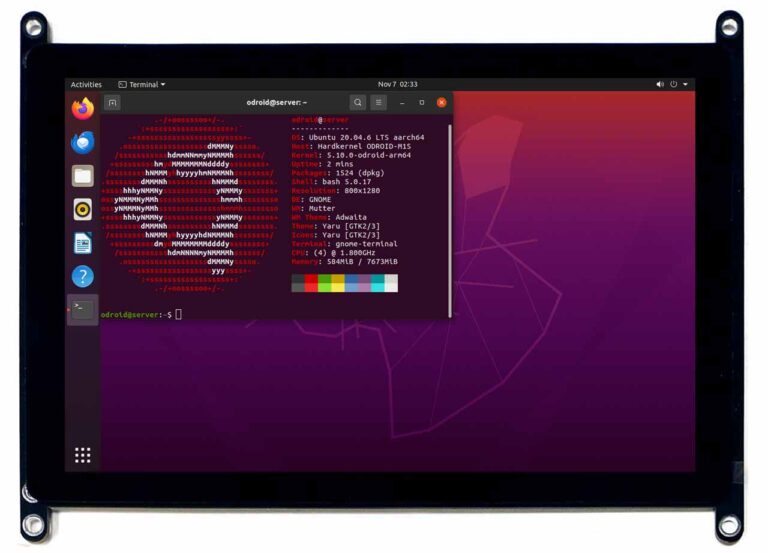
NPU
Since Machine Learning has been a trend in this industry, there is a neural network processing unit (NPU) which can deliver up to 0.8 TOPS on the M1S single board computer.
We could run various TensorFlow Lite and ONNX models on Ubuntu Linux OS. Here is an example of object detection.
CPU governor = performance
AI model = yolov5s.onnx(cpu) / yolov5s.rknn(npu)
Confidence threshold = 0.25
USB Camera = Logitech BRIO


Software support
- Android 11
- Ubuntu 20.04 LTS
- Ubuntu 22.04 LTS

